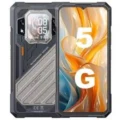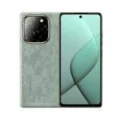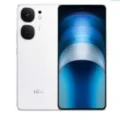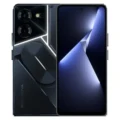Realme 9 5G (India)


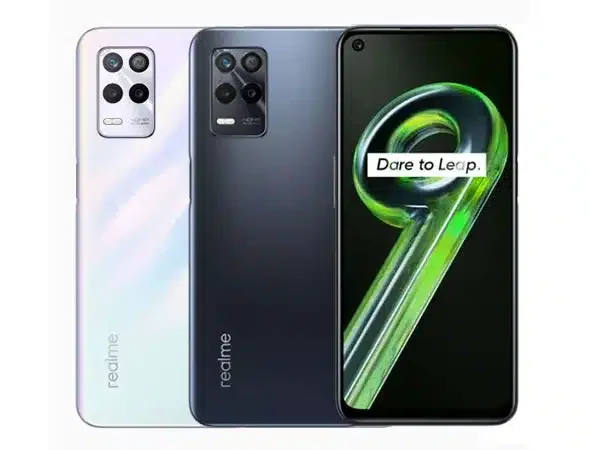


- : 4/6GB RAM Dimensity 810
- : 6.5" 1080x2400 pixels
- : 5000mAh 18W
- : 48MP 1080p
Unleash the Power of Speed: Realme 9 5G (India)
Experience next-generation connectivity with the all-new Realme 9 5G! This powerhouse smartphone is designed to elevate your mobile experience, offering lightning-fast performance, a stunning display, and also a versatile camera system, all at an incredible price.
Immerse Yourself in Speed and Smoothness
The Realme 9 5G boasts the blazing-fast MediaTek Dimensity 810 5G processor, built on a power-efficient 6nm architecture. This translates to smooth multitasking, lag-free gaming, and effortless handling of demanding applications. Whether you’re streaming your favorite shows, conquering online games, or working on the go, the Realme 9 5G keeps up with your dynamic lifestyle.
A Display Built for Entertainment
The phone’s 6.5-inch LCD display delivers a truly immersive viewing experience. Also With a smooth 90Hz refresh rate and a 180Hz touch sampling rate, every touch and swipe feels incredibly responsive. So enjoy crisp visuals and vibrant colors thanks to the 90.5% screen-to-body ratio and 96% NTSC wide color gamut.
Capture Stunning Moments with the AI Triple Camera
The Realme 9 5G empowers you to capture life’s unforgettable moments with its versatile AI Triple Camera system. The 48MP main sensor takes breathtaking photos in any lighting condition, while the additional lenses offer exciting creative possibilities.
Additional Highlights:
- In-display fingerprint sensor for secure and convenient unlocking
- 30W Dart Charge for quick and effortless power ups
- Also available in stunning Stargaze White and Meteor Black finishes
The Realme 9 5G – Experience the future of mobile technology, today!
So if you want to explore more, visit the official website of Realme
For more brand-new smartphones from other brands, visit our page
Specs
Network
| 2G Network GSM 850 / 900 / 1800 / 1900 - SIM 1 & SIM 2 (dual-SIM) CDMA 800 / 1900 |
GSM 850 / 900 / 1800 / 1900 - SIM 1 & SIM 2 |
| 3G Network |
HSDPA 800 / 850 / 900 / 1900 / 2100 |
| 4G Network |
1, 2, 3, 5, 7, 8, 28, 34, 38, 39, 40, 41 |
| 5G Network |
1, 28, 41, 77, 78 SA/NSA |
| Speed |
HSPA, LTE, 5G |
LAUNCH
| Announced | March, 2025 |
| Status |
Available. Released 2022, March 14 |
BODY
| Dimensions | 162.6 x 74.8 x 8.5 mm (6.40 x 2.94 x 0.33 in) |
| Weight | 188 g (6.63 oz) |
| Build | Glass front, plastic back |
| SIMs SIM (Subscriber Identity Module) is a small card that contains mobile network subscriber's account information. This allows the phone using the card to attach to a mobile network. The SIM card is most commonly associated with GSM and UMTS mobile networks. Moving a SIM card from one phone to another allows a subscriber to switch mobile phones without having to contact their mobile network carrier. SIM cards can also be used by a phone to store limited amounts of data, such as phone numbers and text messages. |
Dual SIM (Nano-SIM, dual stand-by) |
Display
| Display Type Display Technology => A number of display technologies and types used in mobile phones => TFT (Thin Film Transistor), IPS (In-Place Switching), OLED (Organic Light Emitting Diode), AMOLED (Active-Matrix Organic Light-Emitting Diode), Super AMOLED (an even advanced version of AMOLED), Resistive Touchscreen (Resistive touchscreens contain two layer of conductive material with a very small gap between them which acts as a resistance), Capacitive Touchsceen (Capacitive touchscreen technology consists of a layer of glass coated with a transparent conductor) | IPS LCD, 90Hz, 480 nits (typ), 600 nits (HBM) |
| Size | 6.5 inches, 102.0 cm2 (~83.9% screen-to-body ratio) |
| Resolution | 1080 x 2400 pixels, 20:9 ratio (~405 ppi density) |
PLATFORM
| Operating System OS => Every computer system run on a base software called Operating System (OS). Operating System controls all basic operations of the computer (such as smartphone, PDAs, tablet computers and other handheld devices). The Operating System allows the user to install and run third party applications (apps), apps are used to add new functionality to the device. | Android 11, Realme UI 2.0 |
| Chipset Chipset is a group of integrated circuits designed to perform one or a more dedicated functions, often with real time computing constraints, Popular smartphones are equipped with more advanced embedded chipsets that can do many different tasks depending on their programming. | Mediatek Dimensity 810 (6 nm) |
| CPU CPU (Central Processing Unit) mostly known as processors, CPU processes instructions in order to carry out certain functions that make your device operate properly. Processors are often described as the brain of computers, smartphones and tablets, Smartphones and tablets rely on processors to carry out their every task, Processors are an incredibly important factor in selecting any type of computing device, including your smartphone. | Octa-core (2x2.4 GHz Cortex-A76 & 6x2.0 GHz Cortex-A55) |
| GPU GPU (Graphics Processing Unit) is a single-chip processor designed to rapidly manipulate and alter memory to accelerate the creation of images in a frame buffer intended for output to a display, This includes things such as lighting effects, object transformations, and 3D motion. | Mali-G57 MC2 |
MEMORY
| Card Slot Memory Card Slot is a special slot for inserting a memory card. Memory cards allow you to expand the phone's built-in memory, A memory card (sometimes called a flash memory card or a storage card) is a small storage medium used to store data such as text, pictures, audio, and video, for use on small, portable or remote computing devices such as mobile phones, mp3 players, digital cameras. | microSDXC (dedicated slot) |
| Internal | 64GB 4GB RAM, 128GB 6GB RAM UFS 2.1 |
MAIN CAMERA
| Cameras Specs Today’s smartphones come equipped with a very comprehensive set of camera related specifications. Our smartphone, for many of us, has become our primary camera due to it being the one we always have with us. |
48 MP, f/1.8, 26mm (wide), 1/2.0", 0.8µm, PDAF 2 MP, f/2.4, (macro) 2 MP, f/2.4, (depth) |
| Video | 1080p@30fps |
| Camera Features |
LED flash, HDR, panorama |
SELFIE CAMERA
| Cameras Specs Today’s smartphones come equipped with a very comprehensive set of camera related specifications. Our smartphone, for many of us, has become our primary camera due to it being the one we always have with us. |
16 MP, f/2.1, 26mm (wide), 1/3.09", 1.0µm |
| Features |
HDR, panorama |
| Video | 1080p@30fps |
SOUND
| Loudspeaker | Yes |
| 3.5mm jack |
Yes 24-bit/192kHz Hi-Res audio |
COMMS
| WLAN |
Wi-Fi 802.11 a/b/g/n/ac, dual-band |
| Positioning |
GPS, GLONASS, GALILEO, BDS, QZSS |
| Bluetooth Bluetooth is a wireless communications technology for exchanging data between mobile phones, headsets, computers and other network devices over short distances without wires, Bluetooth technology was primarily designed to support simple wireless networking of personal consumer devices. | 5.1, A2DP, LE, aptX HD |
| Infrared Infrared connectivity is an old wireless technology used to connect two electronic devices. It uses a beam of infrared light to transmit information and so requires direct line of sight and operates only at close range. | |
| USB | USB Type-C 2.0, OTG |
| NFC NFC (Near field communication) is a set of standards for smartphones and similar devices to establish peer-to-peer radio communications with each other by touching them together or bringing them into proximity, usually no more than a few inches. | |
| Radio |
Features
| Sensors Sensors are electronic components that detects and responds to some type of input from the physical environment. The specific input could be light, heat, motion, moisture, pressure and location, The output is generally a signal that is converted to use in computing systems, a location sensor, such as a GPS receiver is able to detect current location of your electronic device. |
Fingerprint (side-mounted), accelerometer, gyro, proximity, compass |
BATTERY
| Battery Type Battery Type => Cell phones run on various kinds of batteries depending on the manufacturer, phone size or shape and features. There are basically four types of cell phone batteries => Lithium Polymer, Lithium Ion, Nickel Metal Hydride and Nickel Cadmium. | Li-Ion (Lithium Ion) |
| Capacity Battery Capacity is a measure (typically in Amp-hr) of the charge stored by the battery, and is determined by the mass of active material contained in the battery. The battery capacity represents the maximum amount of energy that can be extracted from the battery under certain conditions. | 5000 mAh |
| Placement | non-removable |
| Charging The functionality responsible for recharging batteries in portable devices, such as mobile phones, significantly influences both battery lifespan and the practicality of daily product usage.The charging process, encompassing factors like voltage, current, and completion actions, is contingent upon the battery's size and type.Contemporary battery chargers dynamically adjust charging parameters based on the battery's current charging state. Charging an empty battery poses no safety risk, allowing for a quicker charging process. Consequently, many charging speed benchmarks, including ours, specify the battery level achieved after a 30-minute session on an empty battery.Standard chargers with a power output of 5V/1A, equivalent to 5W, serve as a baseline, with anything surpassing this speed classified as quick or fast charging. | 18W wired |
MISC
| Colors |
Stargaze White, Meteor Black |
| Model | RMX3388 |
| SAR SAR (Specific absorption rate): Each GSM handset has a radio transmitter and receiver in order to operate in the wireless GSM network. That transceiver is manufactured so that when used next to the ear and when worn on the belt, it won't exceed the limits for exposure to radio frequency energy set by the authorities.The authorities in question here are the Federal Communications Commission (FCC) of the U.S. Government, Industry Canada of the Canadian Government (IC), and the Council of the European Union. |
1.05 W/kg (head) 0.74 W/kg (body) |
| Price |
About 180 EUR |
TESTS
Reviews
Disclaimer Note
We strive to maintain accurate and up-to-date content on our website for general information purposes only. Please refrain from using the material for business, legal, or any other decisions.






